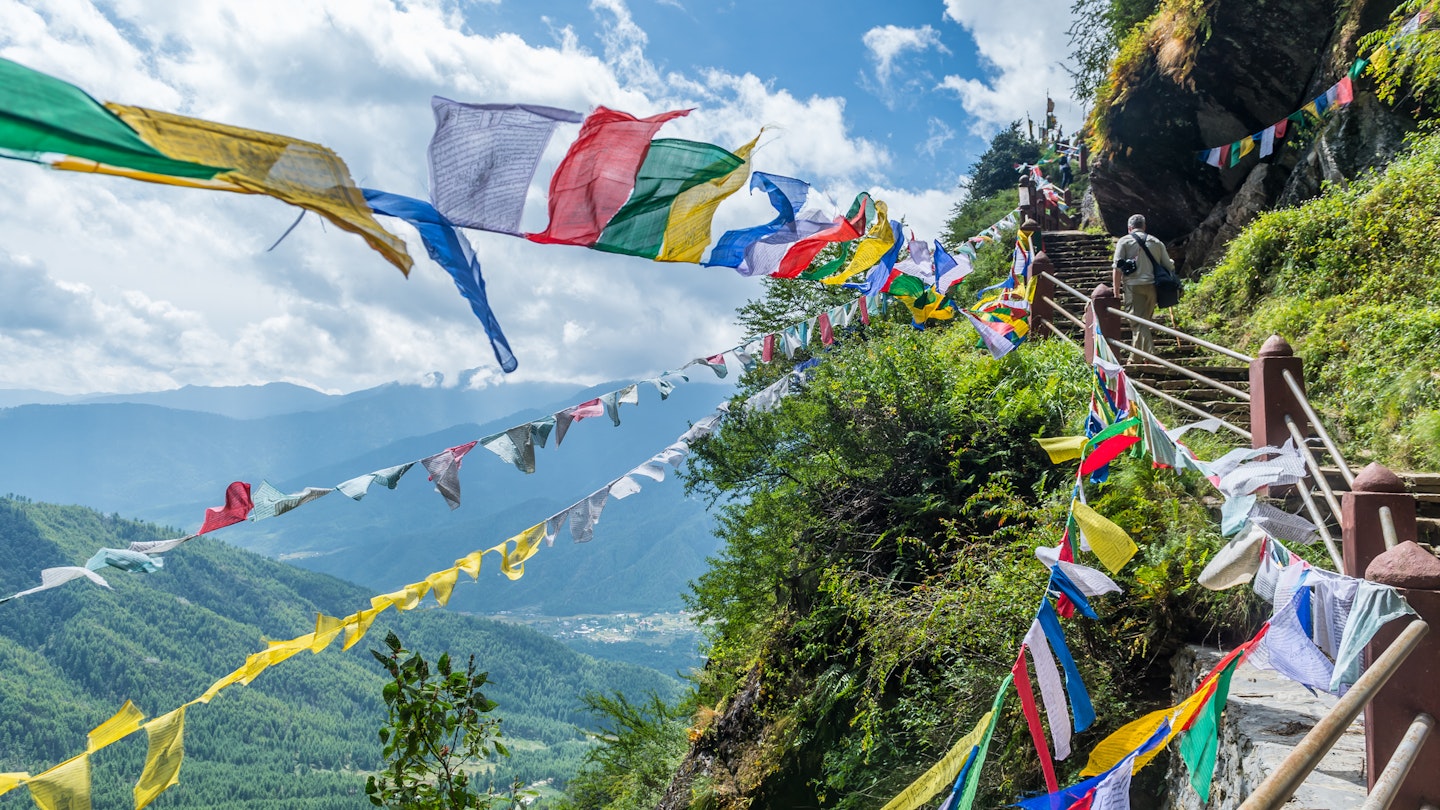Traveling to Bhutan on a Budget with iBestTravel
Bhutan’s unofficial label as a modern-day Shangri-La remains its biggest draw, captivating travelers with unique attributes. It is the only country in the world without traffic lights, known for its national dish that features chili as the main ingredient, and where the 15th-century mystic Lama Drukpa Kunley, affectionately referred to as the “divine madman,” promotes the phallus as a protector against evil.
Daily Costs in Bhutan
The first significant expense is Bhutan’s daily charge, recently reduced to US$100, referred to as a “sustainable development fee.” This new fee structure allows travelers the flexibility to create an itinerary tailored to their budgets without including accommodation or transport.
- Basic room for two: Nu 3500–4000
- Farm stays: Nu 2500
- Public transport: A shared taxi between cities costs about Nu 1500 per person, and a bus seat will cost about a third of that. A full taxi hire for sightseeing or travel averages around Nu 3500 for up to 100 km (62 miles).
- Tea/coffee: Nu 80–150
- Sandwich: Nu 300
- Dinner for two: Nu 1200
- Beer/pint at the bar: Nu 250
Average daily cost: Nu 8000–10,000
1. Start Your Trip to Bhutan Regionally
Travelers will find that there are no direct flights from the global West to Bhutan. Most flights will stopover in neighboring India, making it wise to plan ahead and book separate tickets: first to India, then onwards to Bhutan. Drukair, Bhutan’s national airline, offers numerous connections to New Delhi and Kolkata. Moreover, this could potentially save you significant expenses—up to US$500—if well-timed.
2. Enter Bhutan by Road
For those who prefer land travel, a journey by train and taxi from Kolkata, India, to Bhutan via Hasimara and Phuentsholing can be planned. New Jalpaiguri is the best-connected large train station to Phuentsholing, offering a minimal cost of around INR 2500 (US$30) for premium seating. Alternatively, flying into Bagdogra can expedite your journey, though the costs remain comparable.
3. Know the Rules to Avoid Fines
Be mindful of Bhutan’s strict regulations, particularly concerning noise (no honking in certain zones) and tobacco consumption. Violations can lead to fines of Nu 5000 or more, as well as a possible license suspension, so adhering to these rules is essential for a harmonious visit.
4. Time Your Visit for Better Deals
Visiting during the shoulder season offers significant savings. While Bhutan is known for its vibrant spring and autumn seasons, winter still presents budget-friendly opportunities. The valleys of Thimphu, Paro, and Punakha usually experience minimal snow, creating a comfortable environment to explore at reduced costs.
5. Travel in Larger Groups to Share Costs
Transportation costs can be a major hurdle for solo travelers, especially since public transport in Bhutan may be inconsistent. Sharing a taxi can significantly reduce costs, and traveling in groups allows for shared guide fees, which are typically required for foreign visitors and start from Nu 2000 per day.
6. Check the Festival Calendar
Aligning your visit with local festivals can provide unique experiences at little to no cost. Many cultural events are free to attend and present vibrant displays of tradition, offering an opportunity to witness Bhutan’s rich heritage.
7. Opt for Guesthouses Over High-End Accommodations
If luxury isn’t a priority, guesthouses provide clean, comfortable lodging that is often situated in aesthetically pleasing buildings reflecting traditional architecture. This choice not only enhances the local experience but often supports local communities, making it a win-win.
8. Eat Local Dishes
Diverse and affordable, Bhutanese cuisine is deliciously accessible. National dishes like Ema Datse—a chili and cheese stew—are widely popular and available at reasonable prices in local restaurants. By embracing local foods, travelers can enjoy both cultural authenticity and cost savings.
9. Buy From the Source
When purchasing groceries or handicrafts, opt to buy directly from producers. Explore Bhutan’s traditional art schools to witness artisans at work and purchase items at fairer prices compared to commercial retail outlets.
10. Camp on Hiking Trails
Bhutan’s breathtaking landscapes provide numerous hiking opportunities. Camping along popular trails can offset other travel expenses while allowing for an immersive experience in nature. The per-day cost for guided hikes typically starts at around US$200, which includes most necessities.




